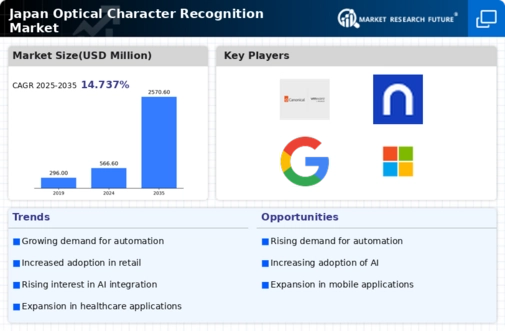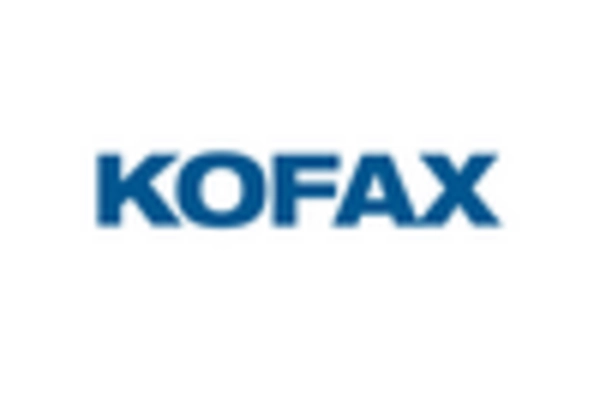Growing E-commerce Sector
The rapid expansion of the e-commerce sector in Japan is contributing to the growth of the optical character-recognition market. As online retailers seek to optimize their operations, the need for efficient inventory management and order processing systems becomes critical. OCR technology facilitates the automation of data entry from invoices, shipping labels, and product descriptions, thereby reducing human error and increasing processing speed. The optical character-recognition market is likely to see a significant uptick in demand as e-commerce businesses recognize the value of integrating OCR solutions into their logistics and supply chain operations.
Rising Demand for Document Digitization
The optical character-recognition market in Japan is experiencing a notable surge in demand for document digitization. As businesses and government agencies increasingly seek to transition from paper-based systems to digital formats, the need for efficient data extraction technologies becomes paramount. This shift is driven by the desire to enhance operational efficiency and reduce storage costs. In 2025, the market is projected to grow at a CAGR of approximately 12%, reflecting the urgency for organizations to adopt OCR solutions. The optical character-recognition market is thus positioned to benefit from this trend, as companies invest in software that can accurately convert printed and handwritten text into machine-readable formats.
Advancements in Machine Learning Algorithms
Recent advancements in machine learning algorithms are significantly influencing the optical character-recognition market in Japan. These innovations enhance the accuracy and speed of text recognition, making OCR solutions more appealing to various sectors, including finance, healthcare, and logistics. The integration of deep learning techniques allows for improved recognition of complex fonts and handwriting styles, which were previously challenging for traditional OCR systems. As a result, the optical character-recognition market is likely to see increased adoption rates, with organizations recognizing the potential for improved data processing capabilities. This trend may lead to a market valuation exceeding $500 million by the end of 2025.
Increased Focus on Data Security and Compliance
In Japan, there is an increasing emphasis on data security and compliance, particularly in industries such as finance and healthcare. Organizations are required to adhere to stringent regulations regarding data handling and storage, which drives the need for reliable optical character-recognition solutions. By utilizing OCR technology, companies can ensure that sensitive information is accurately captured and securely stored, thereby mitigating risks associated with data breaches. This heightened focus on compliance is expected to bolster the optical character-recognition market, as businesses invest in advanced OCR systems that align with regulatory standards.
Government Initiatives for Digital Transformation
The Japanese government is actively promoting digital transformation across various sectors, which is positively impacting the optical character-recognition market. Initiatives aimed at enhancing e-governance and streamlining public services are driving the adoption of OCR technologies. By digitizing records and automating data entry processes, government agencies can improve service delivery and reduce operational costs. This push for modernization is expected to create a favorable environment for the optical character-recognition market, as public sector organizations increasingly invest in OCR solutions to meet regulatory requirements and enhance citizen engagement.

















Leave a Comment